Global warming for beginners
If you had not heard of global warming, how would you be able to determine whether it is happening?
The question of whether climate change is happening is not worth it. You can only argue about the role that people play in it.
- David Attenborough
For a long time I did not write anything about global warming, climate change and in general about the earth's environmental problems. After all, I am a physicist - more precisely, an astrophysicist - and although I am well versed in the physics of the Earth and in science, this is not my area of expertise.
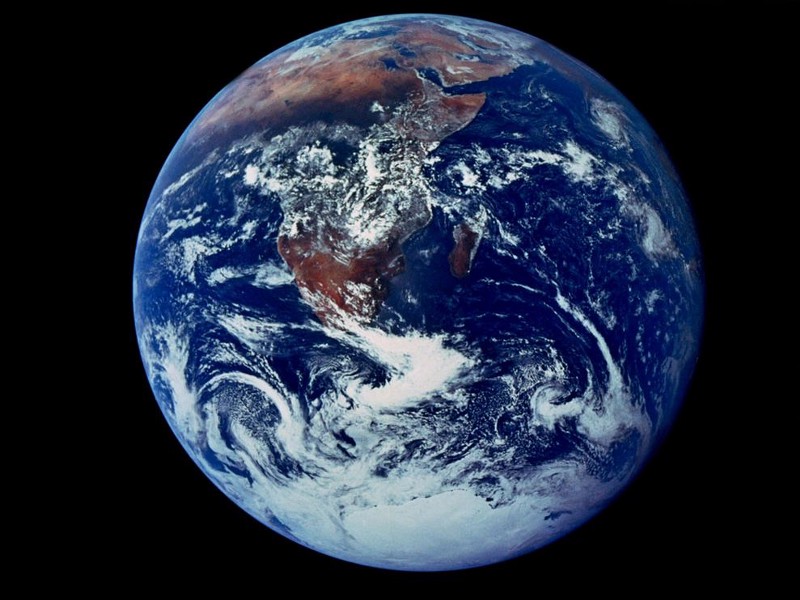
')
But I received many requests to take a look at the IPCC report on global warming (in 2014) and asked me how you can try to determine for yourself whether the Earth is heating up.
And if this is true, then how to understand whether humanity plays a significant role in this process?
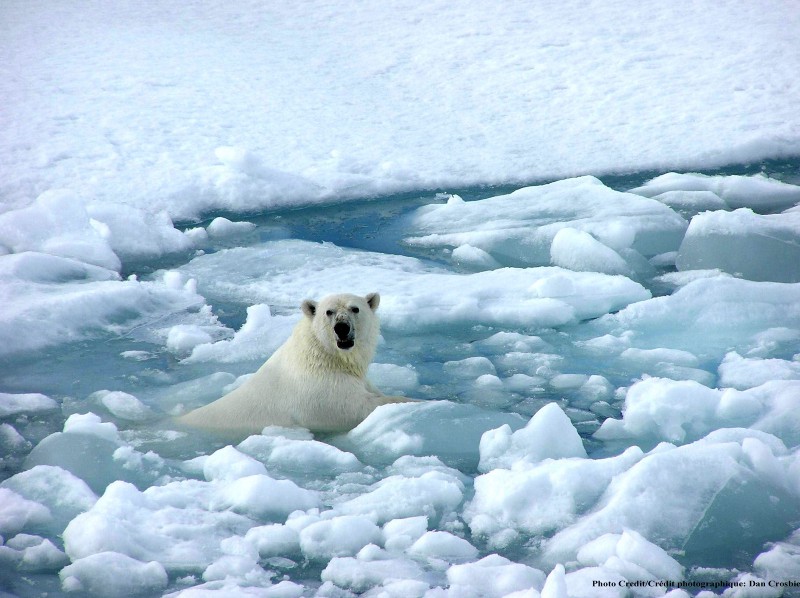
Let's play with you. Pretend that:
- We have never heard of this issue,
- We have never heard the opinions of others on this subject - political, scientific, any other,
- We do not take into account any other considerations (political, economic, environmental)
- We are interested in exactly two points: whether the Earth is warming up, and whether people are related to this.
The post will be great, but it takes time to get to the bottom of the truth. So spend this time and do everything right, according to modern scientific ideas.
Go!

This is the Sun. With a very good approximation, we can say that it is the source of most of the energy that maintains the temperature not only of the Earth, but of all the planets at levels above a few kelvins. (I will use kelvins, but in brackets indicate the degrees Celsius and Fahrenheit: -270 ° C / -455 ° F).
During the day we absorb the energy of the Sun, but also radiate it, both during the day and at night, into space. Therefore, during the day the temperature rises and at night it drops - so it happens with every planet that has day and night sides. Also vary seasons, cold and warm times, depending on the ellipticity of the planet's orbit and the inclination of the axis.

But if the temperature determined only these two parameters, then the planet closest to the Sun would be the hottest, and their temperature would gradually fall as they moved away from the Sun. You can test this assumption, starting from the innermost planet and moving outward.
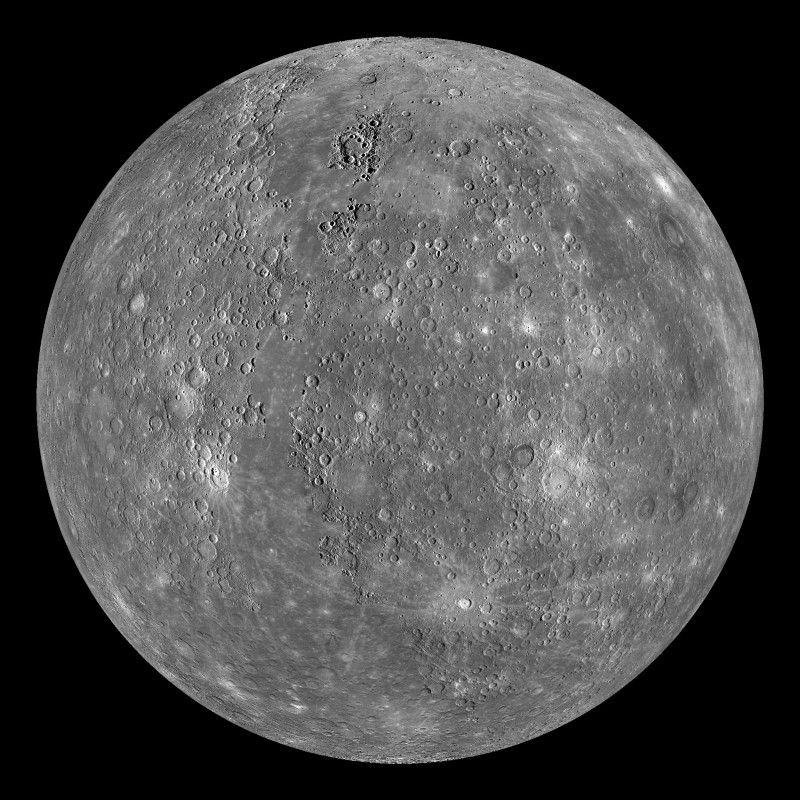
Mercury is very hot. Really very hot! He is the closest to the Sun and makes a revolution in just 88 Earth days. The maximum temperature during the day is an incredible 700 K (427 ° C / 800 ° F) in the hottest places. Mercury rotates very slowly, so that its night part spends a lot of time in the dark, closed from the Sun. At this time, it is cooled to 100 K (–173 ° C / −280 ° F), which is very cold, much colder than the natural temperatures on Earth. This is the situation with the nearest planet to the Sun, Mercury.
What about Venus?
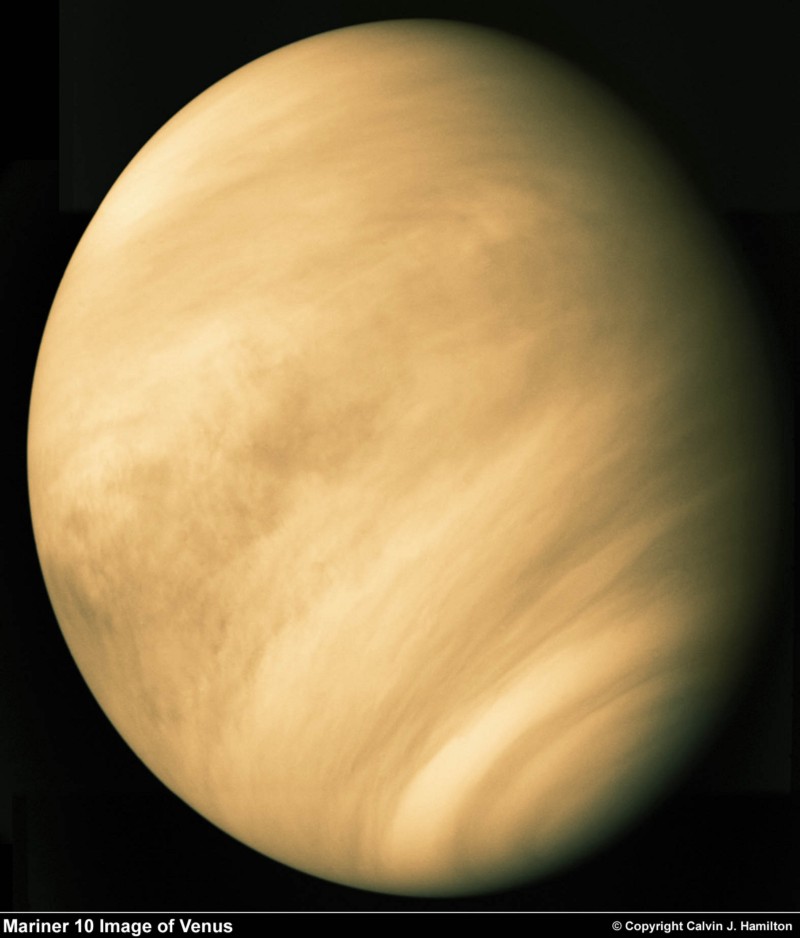
Venus is on average two times farther from the Sun than Mercury and rotates around the Sun in 225 Earth days. It also rotates slowly, spending 100 earth days on the sun and the same in the shade. Therefore, it may seem surprising to you that the temperature of Venus is always constant, both during the day and at night, and the average is 735 K (462 ° C / 863 ° F), which is even greater than Mercury's!
Therefore, if we need to understand what is happening on these worlds, we need to ask - why?
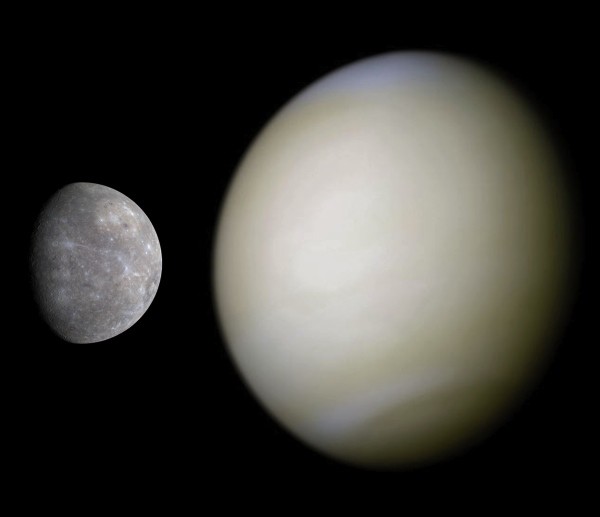
If we compare these two worlds, we find four big differences:
- Mercury is much smaller than Venus,
- Mercury is twice closer to the Sun,
- The reflectivity of Mercury is much less
- Mercury has no atmosphere, while Venus has a very dense one.
It turns out that size does not matter. If Mercury were twice as large, or Venus two times less, their temperature would not change significantly, since the amount of sunlight falling on a unit surface of the planet would not change.
But the fact that Mercury is twice closer to the Sun is important.

Any object removed at double distance from the Sun receives only a quarter of the solar energy per unit area, therefore Mercury should receive four times more energy per each surface than Venus.
At the same time, Venus is hotter, which suggests that the remaining two points contain something important.

The object’s reflection or absorption of rays is known as albedo, from the Latin “albus,” which means “white.” An object with zero albedo ideally absorbs radiation, and an object with an albedo of 1 perfectly reflects. You may be familiar with the Moon, which, apparently, has a rather high albedo, since it looks white both day and night.
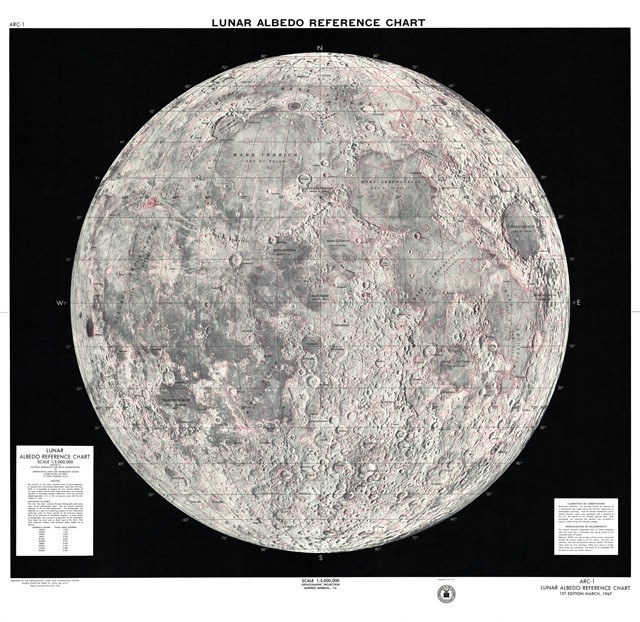
Do not be fooled! The moon's average albedo is only 0.12, that is, it reflects only 12% of the incident light and absorbs 88%. The smaller the albedo of an object, the better it absorbs light, and the higher the albedo, the less light is absorbed. (Especially for planetologists, I clarify that I use Bond albedo).
Albedo of Mercury is about the same as that of the Moon, and Venus is one of the largest for all the bodies of the Solar System.
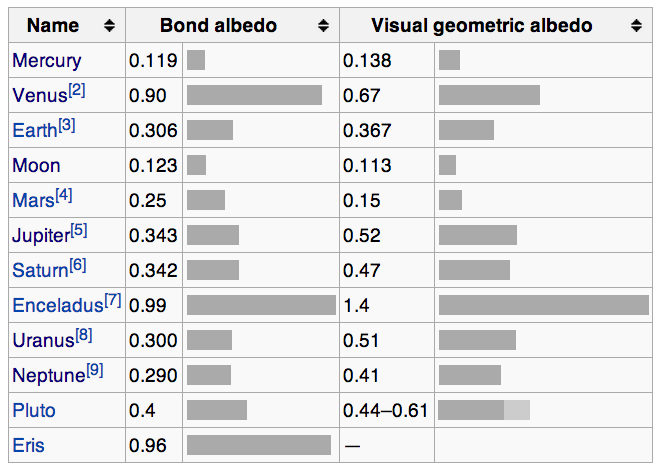
So, what we got: although they have a different size, it does not matter, Mercury receives about four times more energy than Venus per unit area; Mercury absorbs almost 90% of the sunlight falling on it, and Venus only 10%.
And yet Venus, even at night, is always hotter than any place on Mercury.
What is the fourth point?
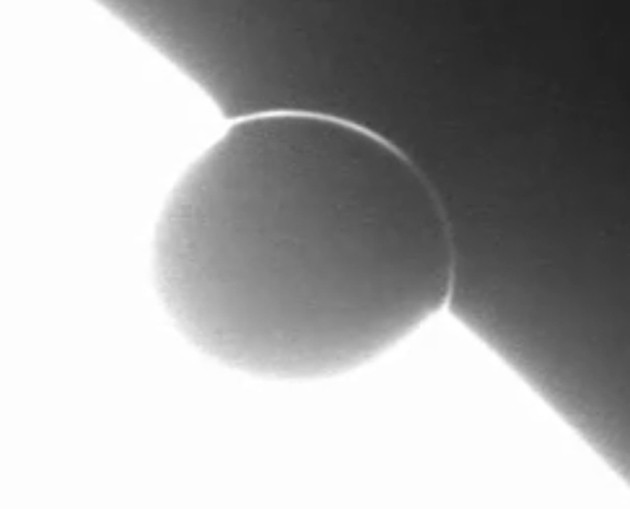
4. Mercury has no atmosphere, and Venus has a very dense one. (Particularly clever of you could see her during the transit of Venus on the solar disk in 2012!)
You see, Mercury and Venus not only absorb the energy of the Sun, they then radiate it again into space in the form of heat. In the case of Mercury, all this heat is returned to space, but in the case of Venus, he has to pass through a thick, thick layer of the atmosphere, which is quite difficult to do.
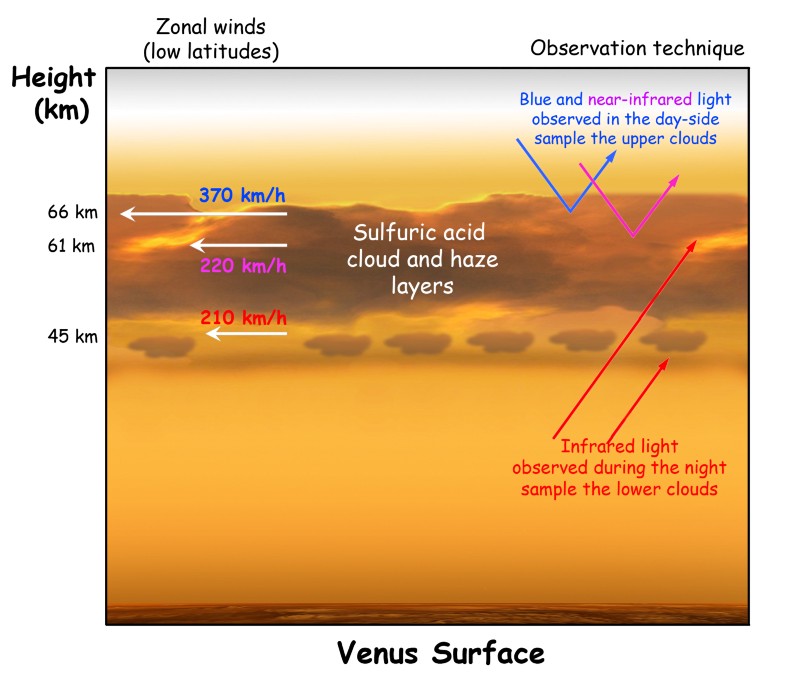
It turns out that the atmosphere plays a critical role. The heat that reaches Venus stays there for a long time. It stays long enough to heat the entire night side to the same temperature as the day time (this helps the winds flying around the planet in four days) and the heat stays there long enough, which allows Venus to be the hottest planet in the solar system.
What can be concluded? The thick atmosphere of Venus is undoubtedly the reason why it is hotter than Mercury. And since the atmosphere is stopped by heat, as it happens on Venus, it is necessary to remember that the Earth also has an atmosphere!

The Earth’s atmosphere is thinner and less efficient. But even if the scale of the effects is very different, the principles and mechanisms remain the same. This is not yet the whole story, but a very important part of it that needs to be borne in mind.
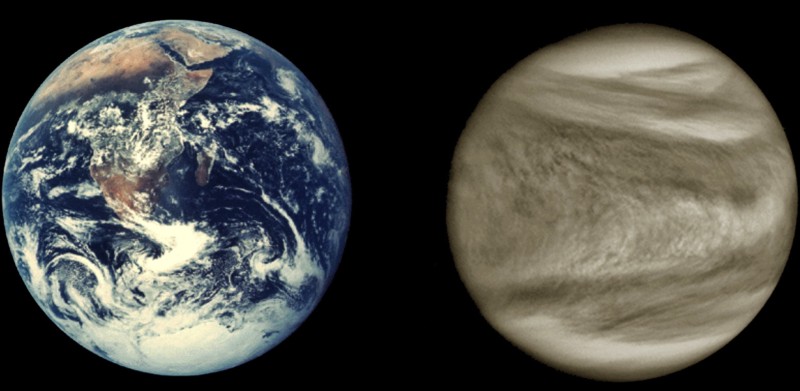
Where is the Earth relative to the first three points of the list?
Its size is about the same as that of Venus, the diameter is 5% larger, although this does not matter for temperature.
It is three times farther from the Sun than Mercury and 50% farther than Venus, so it receives 1/9 of the amount of radiation per unit area received by Mercury and less than half of the radiation received by Venus.
The Earth’s albedo is complex and non-permanent, due to alternating cloud cover (and the clouds strongly reflect radiation), seasons (besides, the areas covered with green albedo are different from bare earth), changes in polar caps and snow cover, etc. . On average, Earth's albedo reaches 0.3, but the following graph shows how much the albedo can vary depending on the place or season.

Therefore, although the Earth albedo is complex, it is easy to track if there are satellites in orbit and it is easy to take into account in building a model of what is happening with our home planet.

If we need to understand what the temperature of the Earth is, why it is so and whether people have done something to change it, we need to understand the fourth point: the atmosphere of the Earth. She is real, she is and she is important - but how much?
To understand how this works, we need to start with a source of energy that the atmosphere of the planets captures so well: from the Sun.
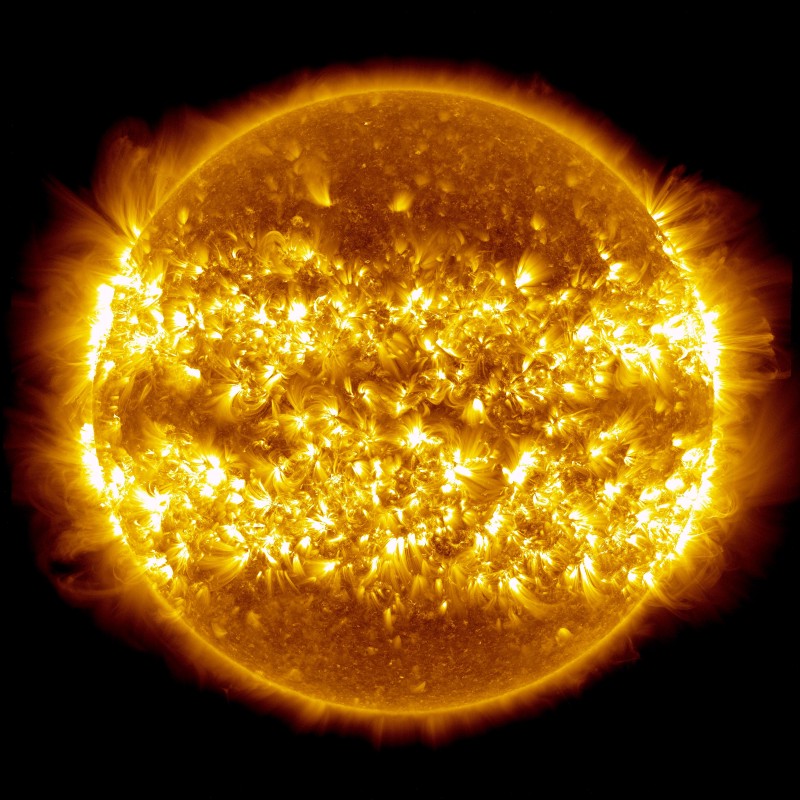
The sun, using the time-tested metaphor, hellishly hot. At least, if we assume that the surface temperature of hell is about 6000 K.
This radiation - like any other - has a specific distribution of energy, known as black body radiation (with a small additive at very high wavelengths due to the effects of the solar atmosphere). This means that most of the light coming from the sun is concentrated in the ultraviolet, visible and infrared parts of the spectrum. You will get this result, heating anything up to 6000 K. This will be an energy spectrum of the following kind:

This is the energy that the planet will receive. In the case of airless worlds like Mercury or the Moon, 100% of this energy will reach the surface of the planet. In a world with clouds, like on Earth, a decent part can be reflected back into space even before it reaches the surface. But the most exceptional case is Venus.
90% of the sunlight falling on Venus is reflected back into space and about 10% is absorbed. At the same time, what is interesting, Venus - like all the planets - then radiates absorbed energy into space! If she did not have an atmosphere like Mercury or the Moon, 100% of this energy would simply be sent back to the Universe. Because Venus is colder (like any planet), it radiates in the same way as the Sun: like a black body. But the radiation wavelengths of Venus are strongly shifted to low energies, low frequencies, and longer wavelengths.

The problem is that many gases in the atmosphere of Venus - gases that easily transmit sunlight - are not transparent to radiation with longer waves emitted by Venus. And it combines with many layers of dense, energy-absorbing clouds. What happens there with energy?
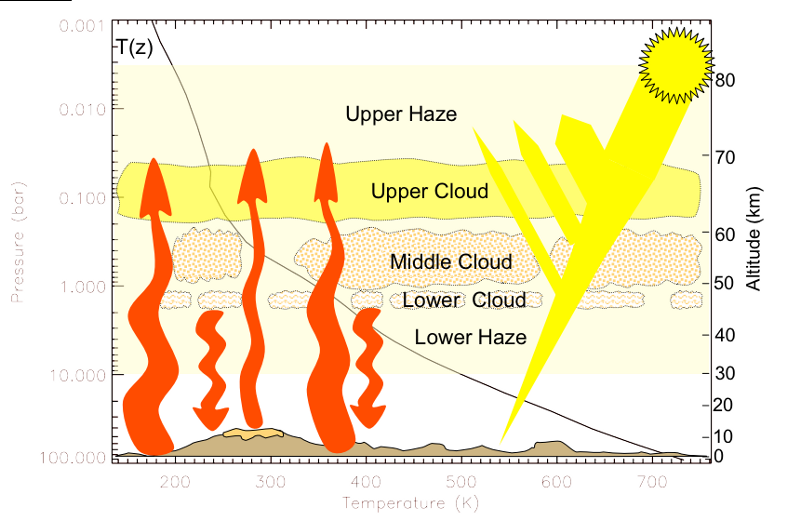
The sun emits energy, Venus absorbs a part of it, and then, when it radiates back, a large percentage of this energy is absorbed by the atmosphere and sent back to the surface. The surface again radiates this energy and again, the atmosphere absorbs most of it and radiates it back to the surface.
And this process continues. The thicker the atmosphere of Venus - and, in particular, the thicker the components of the atmosphere that are opaque to the infrared radiation emitted by the surface of Venus - the longer the energy remains on the planet.
Therefore, Venus is so hot!

There are only 13 photographs (as far as I know) taken by the descent vehicle on the surface of Venus: Venus-13, which survived, surprisingly, 127 minutes on a hot second planet from our Sun. (Her sister, Venus-14, survived a respectable period of 57 minutes). This is not bad, considering that the surface of Venus is hot enough to melt lead in seconds!
Let's return to the atmosphere of Venus. It is very dense: it contains 100 times more molecules than the atmosphere of the Earth and 96.5% of the atmosphere of Venus is carbon dioxide. The rest is nitrogen, with small amounts of other molecules, including a little bit of our favorite substance H 2 O.

These two gases have a very strong absorption effect in the infrared. Here's what the absorption spectrum of infrared radiation for carbon dioxide looks like:

And in water vapor it is like this:
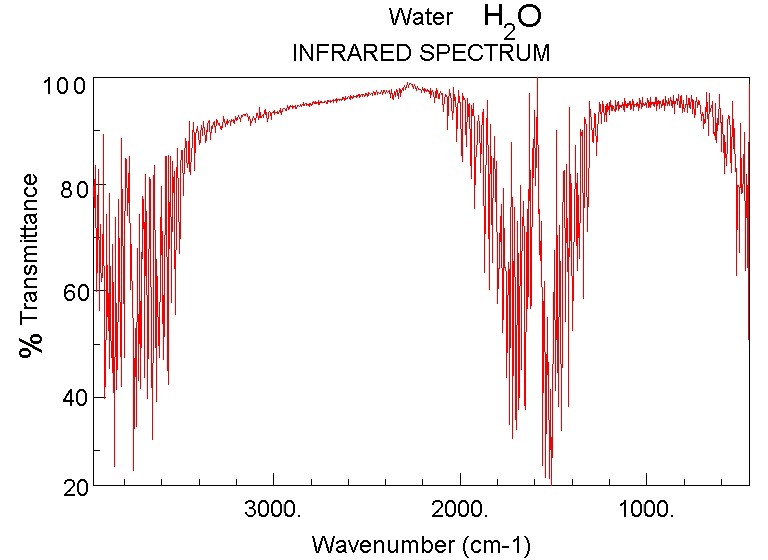
The scales shown here do not correspond to the concentrations of gases on Venus. Water vapor on Venus retains only a quarter of the efficiency compared with the schedule, but the effect of carbon dioxide - just imagine! - about a quarter of a million times (250,000) stronger than on the chart.
That is, CO 2 on Venus is mainly responsible for keeping the temperature on the planet due to radiation, which cannot return to space, and for such a long period of its maintenance. Here is a numerical representation of what carbon dioxide is doing on Venus with heat radiated from the surface.

If there was no atmosphere on Venus - if it resembled Mercury more and was just a sphere that absorbs most of the sunlight to release it back into space - its temperature would be about 340 K (67 ° C / 153 ° F) that, although hot, is not unique.
The effect of the atmosphere of Venus - with all the clouds and gases - works like a thick, huge, insulating blanket that keeps Venus warm in the same way that they keep you warm: absorbing its energy and radiating back to it.

Under a heavier blanket you will be warmer, and the effect will increase a few blankets. It is possible, with a sufficient amount of blankets, to warm up much higher than your normal temperature - be careful not to overdo it!
At Earth, the atmosphere is much less dense, but it still copes with the role of a blanket.

If it were not for the atmosphere - if our planet was more like the Moon or Mercury - the typical temperature would be around 255 K (-18 ° C / 0 ° F), or much below the freezing point. Our world is not frozen: cloud cover, water vapor, methane and carbon dioxide, along with other gases, keep its temperature 33 ° C (59 ° F) higher.
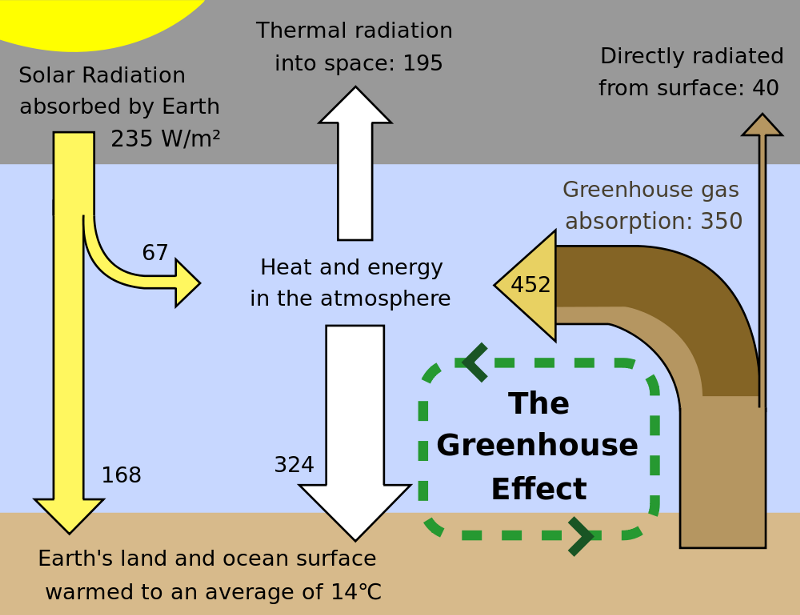
For the first time this effect was discovered almost two centuries ago by Joseph Fourier, and studied in detail by Svante Augustus Arrhenius in 1896. (Remember the school course of chemistry on acids and bases? That's all he came up with).
All this: water vapor, methane, carbon dioxide, any gas that absorbs infrared radiation, works like a blanket. And if we increase (or decrease) the content of these gases in the atmosphere of the planet, it will be akin to increasing (or decreasing) the thickness of the blanket, which covered the planet. This, too, was discovered by Arrhenius over a hundred years ago.
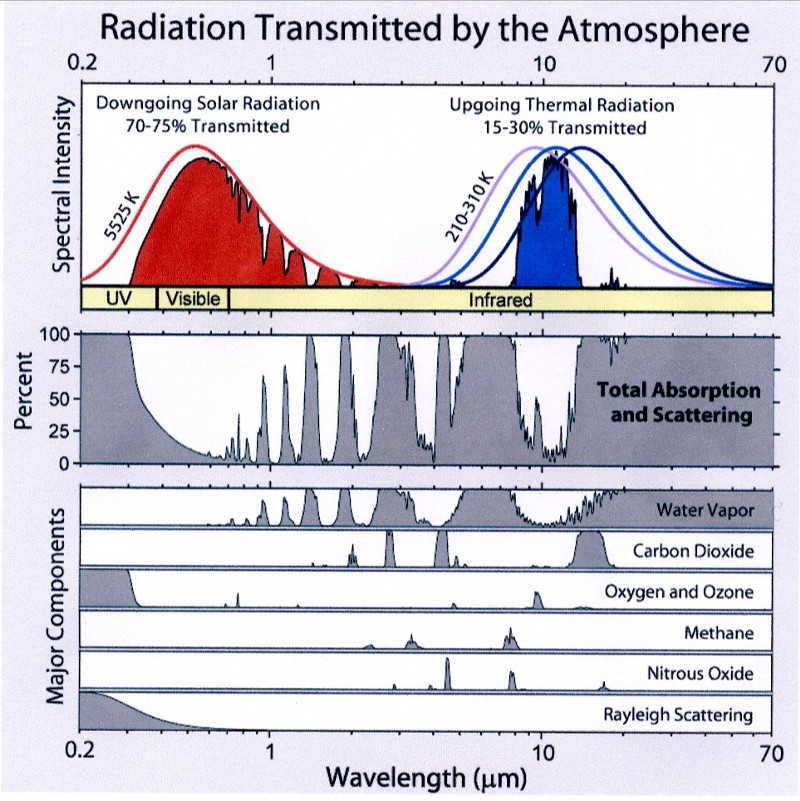
So far, the Earth’s atmosphere looks like this: either it can be described as a few blankets, or as a blanket of a given thickness. You can add or remove blankets (or change the thickness of the blanket) by adding or removing various gases that absorb infrared radiation from the atmosphere.
This idea supports global warming, the greenhouse effect and explains why planets with an atmosphere are hotter than planets without an atmosphere. So far, no one here will find any contradictions: the planets receive sunlight, reflect part of it and absorb the rest, which can also be radiated. Depending on the composition of the atmosphere, this newly radiated energy can be caught with very different efficiencies, which warms the planet.
What is the atmosphere of the earth?

Mainly from nitrogen, about 78% of our dry atmosphere, followed by oxygen, 21%. There are about 1% of argon, inert gas, followed by a little carbon dioxide, neon (another inert gas), methane and other elements.
I wrote the “dry atmosphere” for a reason, because our atmosphere is not dry. We have such a small annoying thing that keeps the atmosphere from drying out.

I mean, of course, our oceans, which are 300 times larger than the entire atmosphere of the Earth. Due to chemical processes (evaporation, vapor pressure, etc.), they add about 1% of the atmosphere as water vapor. This figure varies greatly, but we cannot control this component.
There are others; except water vapor, we are not controlled by clouds, oxygen or ozone (at least for now). But the amount of carbon dioxide in the atmosphere has changed dramatically over the past few centuries, and this is no doubt due to human activity.
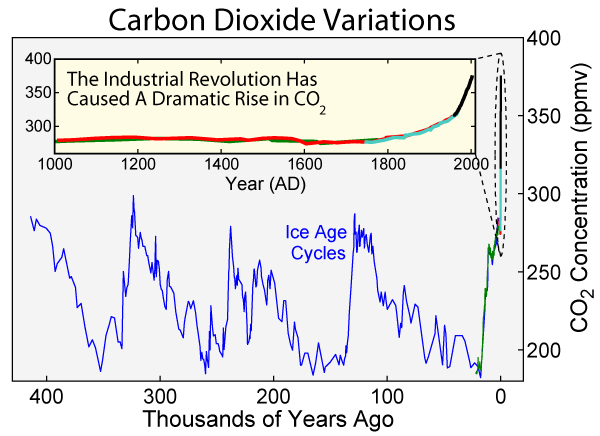
Until the end of the 18th century, carbon dioxide levels behaved stably and amounted to 270-280 parts per million in the atmosphere, varying slightly due to volcanic eruptions, forest fires and other natural processes. But with the advent of the industrial revolution, all this began to change.
For the first time in history, carbon accumulated over hundreds of millions of years, stored beneath the surface of the earth — remains of carbon organisms buried under the ground and turned into oil, coal, and other resources, began to burn and return to the atmosphere.
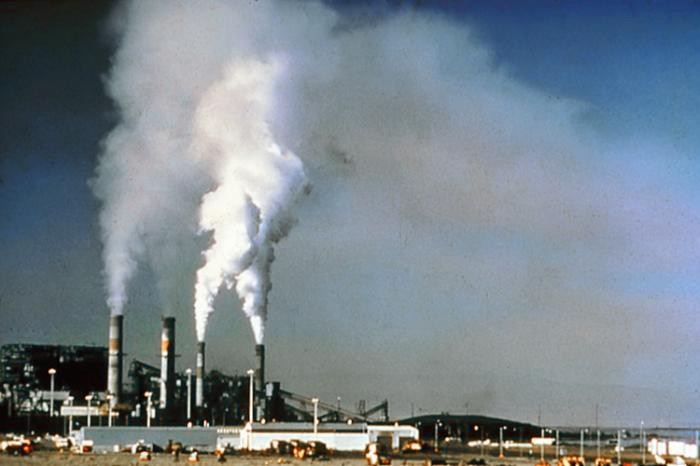
You can calculate it yourself, and it will turn out that since the beginning of the industrial revolution we burned and added about 1.5 trillion tons of carbon dioxide into the atmosphere.
This may surprise you, because if you count the total amount of carbon dioxide in the atmosphere, it will be only 2.1 trillion tons (400 parts per million), so its amount has increased by only 0.7 trillion tons (270 parts per million). Where are the 0.8 trillion tons?
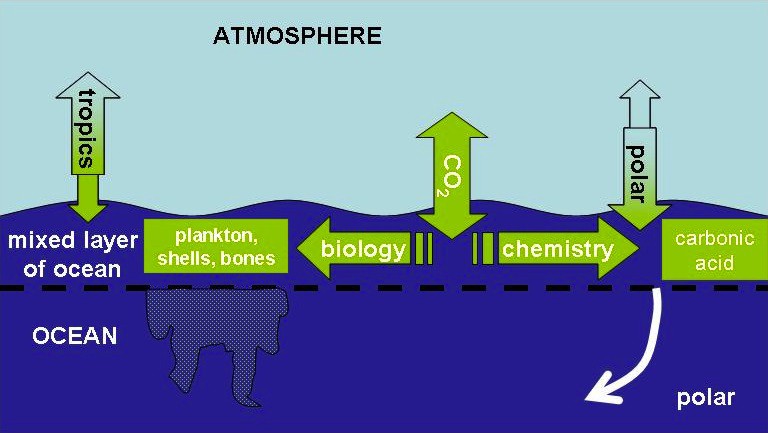
To the ocean. Do you know what happens if you mix carbon dioxide CO 2 with water H 2 O? Get H 2 CO 3 carbonic acid. (And yes, our old friend Arrhenius also learned about this). If you have heard about the oxidation of the oceans, this is where it comes from and the reason for this is beyond doubt.
But we are not talking about that; our theme is global warming. Based on the phenomena described, we know that the planets absorb light in the ultraviolet, visible and near-infrared bands, and then radiate energy back into space in the middle and far infrared bands. At least, they try, if only something in the atmosphere does not absorb a part of infrared energy and does not radiate it back to the surface of the planet. How do gases handle this on Earth?
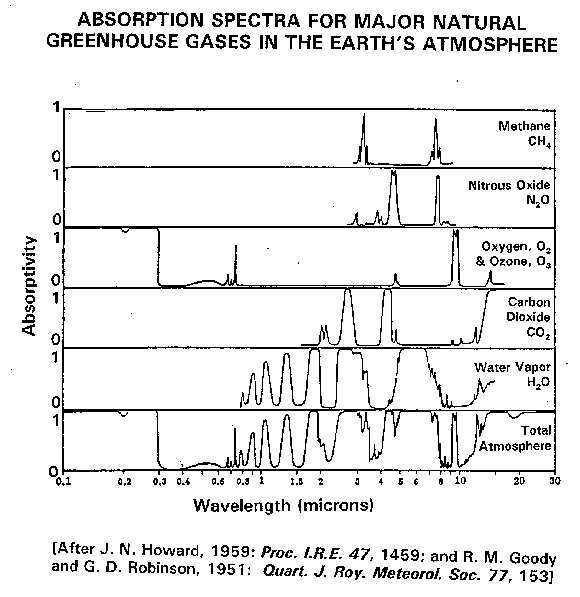
Mediocre, but enough to warm the planet to temperatures of 33 ° C (59 ° F) more than if they did not exist. The science of the atmosphere was able to accurately calculate how different components contribute to this effect:
50% of the greenhouse effect at 33 Kelvin is due to water vapor, 25% due to clouds, 20% due to CO 2 , and the remaining 5% due to other non-condensable gases like ozone, methane, nitric oxide, etc. P.
In fact, if you remove the effect of water vapor, this is what contributes to the re-emission of energy by different gases.
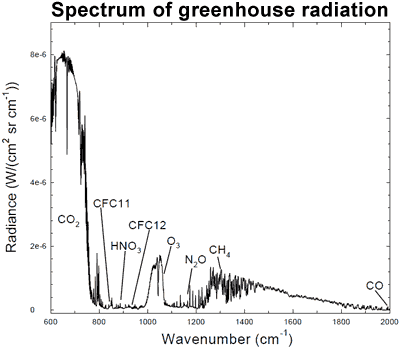
So, if 20% of the greenhouse effect is due to carbon dioxide and we increased its volume by 50%, does this mean that we added another 3.3 ° C (5.9 ° F) to warming?

Perhaps, but not necessarily. There are other factors, and if you heat the Earth, it will have many natural mechanisms for self-regulation.

Excess heat is stored in glaciers and ice caps, and if they are melted, they will release cold water into oceans, lakes and rivers. In the case of a small increase in the amount of carbon dioxide, the activity of plants will increase, which will take away part of the gas from the atmosphere.
A dangerous situation becomes when adding too much carbon dioxide to the atmosphere at too high a speed, due to which the Earth's temperature may start to increase in response to the increasing greenhouse effect.
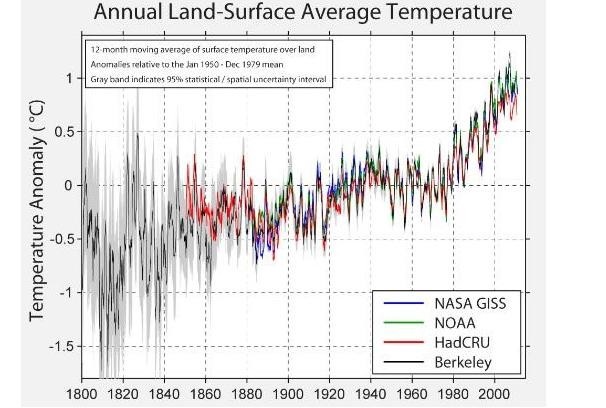
That is what we are seeing. We had normal temperature fluctuations — corresponding to historical observations — until the 1970s. After that, the average temperature of the Earth began to rise in accordance with the exponential increase in the concentration of carbon dioxide.
And this growth has continued without a break (despite the scam refutations of this fact) until today. Some people sampled the data in order to announce the end of the temperature rise, using statistical methods that were wrong from a statistical point of view.

Other methods of representing the total average temperature over time — for example, averaging temperatures over decades — show the same smooth temperature increase over time from the late 1970s.
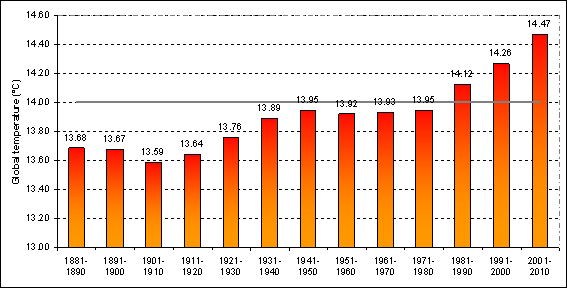
Most of the heat does not accumulate on the surface or in the atmosphere; in these places it is easiest to measure.
As might be expected, since the Earth’s oceans have a low albedo, they occupy most of the surface, have fast convection and an average depth of 3–4 km, most of the heat is in the oceans.
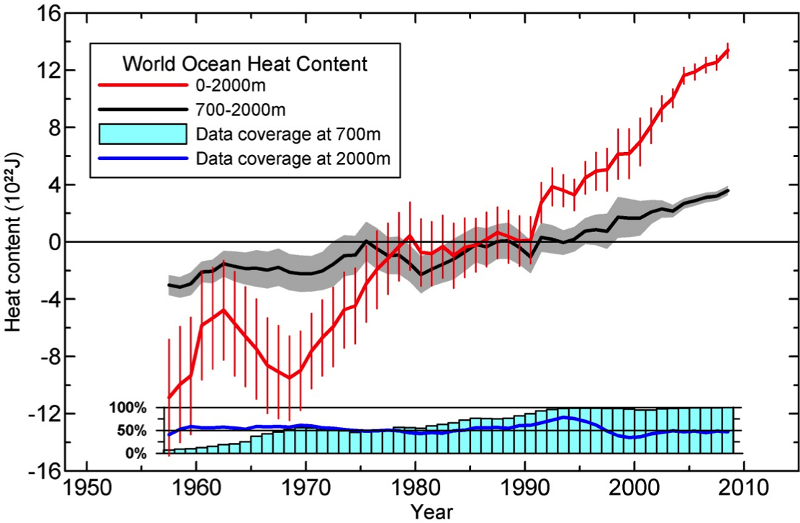
Therefore, no doubt, the Earth has warmed up and - as far as we can judge - it is still heating up.
There may be other, natural explanations of warming, such as an increase in solar activity, which correlated with temperature increases in the past. But in fact, the opposite occurs and the current solar cycle shows a serious decrease in solar activity, which would lead to cooling, other things being equal.
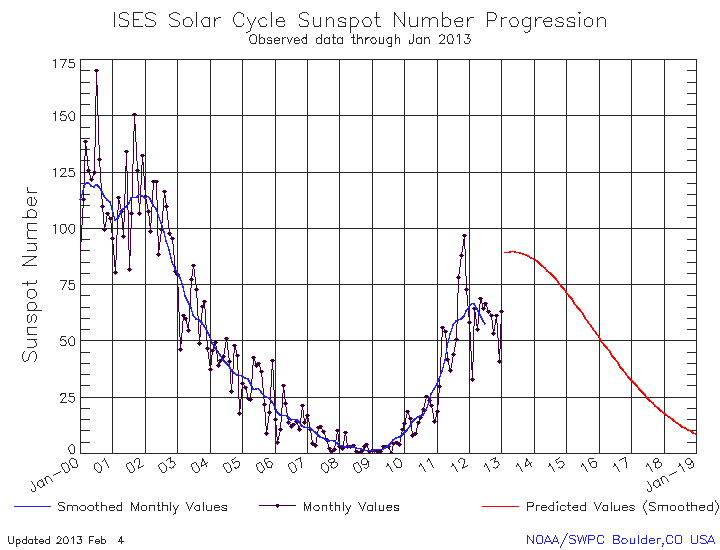
It is not possible to prove strictly that human activity has become the cause of global warming, but based on our knowledge of the planet, the earth’s atmosphere, human activity and the observed warming, it seems very unlikely that this is caused by anything else. Neither the Sun, nor volcanoes, nor any other phenomenon known to us.
The IPCC AR5 report is devoted to a comprehensive and in-depth study of this and other problems of global warming. It can be downloaded , but it is long and there is a short description for it.
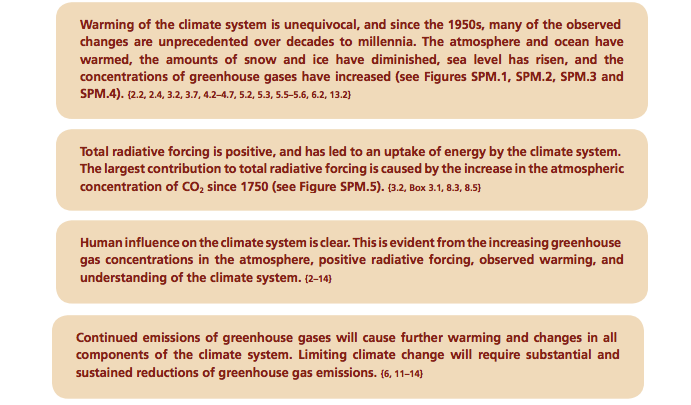
Now that you know that global warming is real and understand why it is most likely related to human activity, I hope you will start asking questions about how to solve this problem correctly. I would like people to live happily and successfully in this world for thousands of generations, and this should begin with caring for the world today.
This is the best we have and the most complete of the pictures we can build. Let's listen to her, take care of our world for our own sake and for the sake of all people and living creatures that will appear after us in this world.
Source: https://habr.com/ru/post/369549/
All Articles